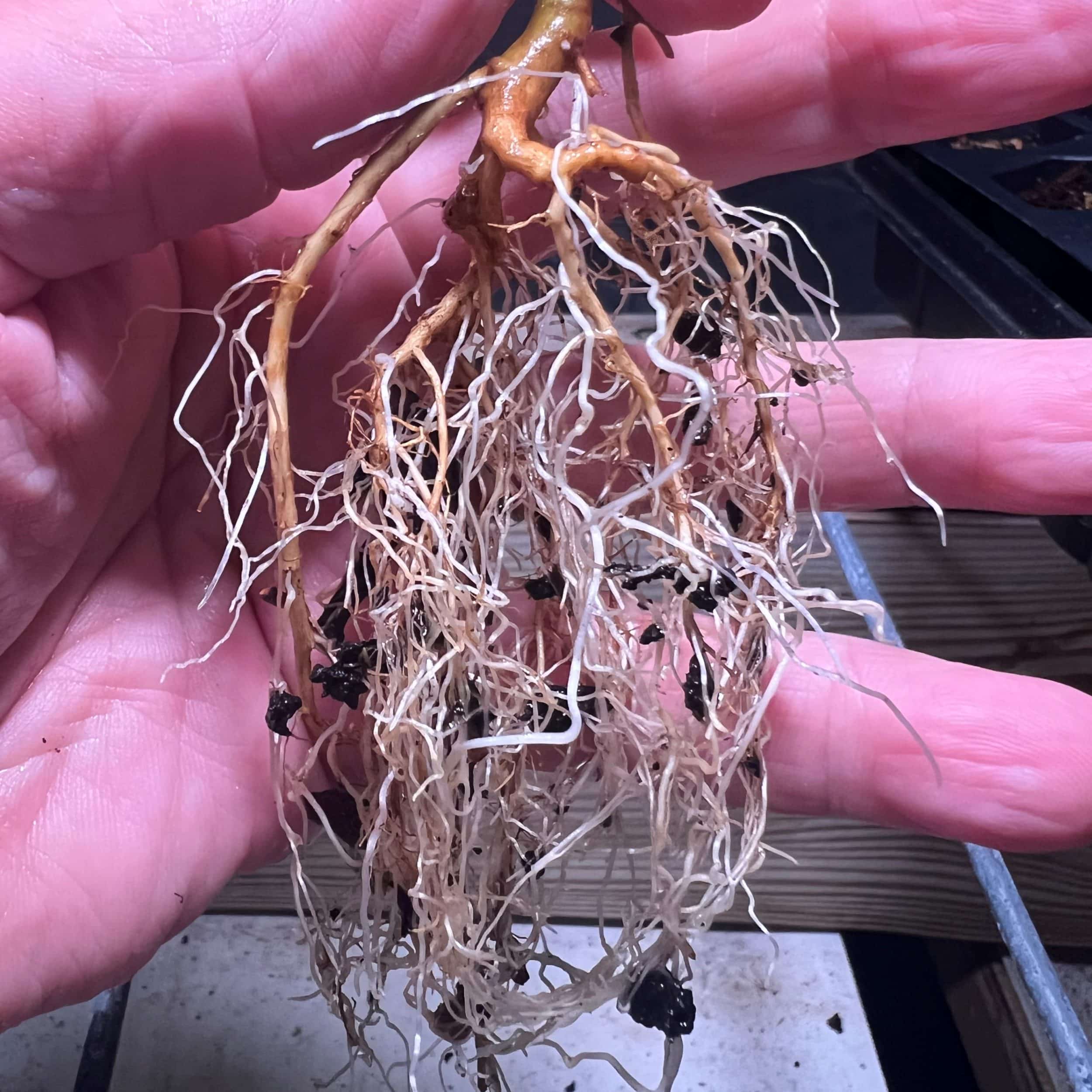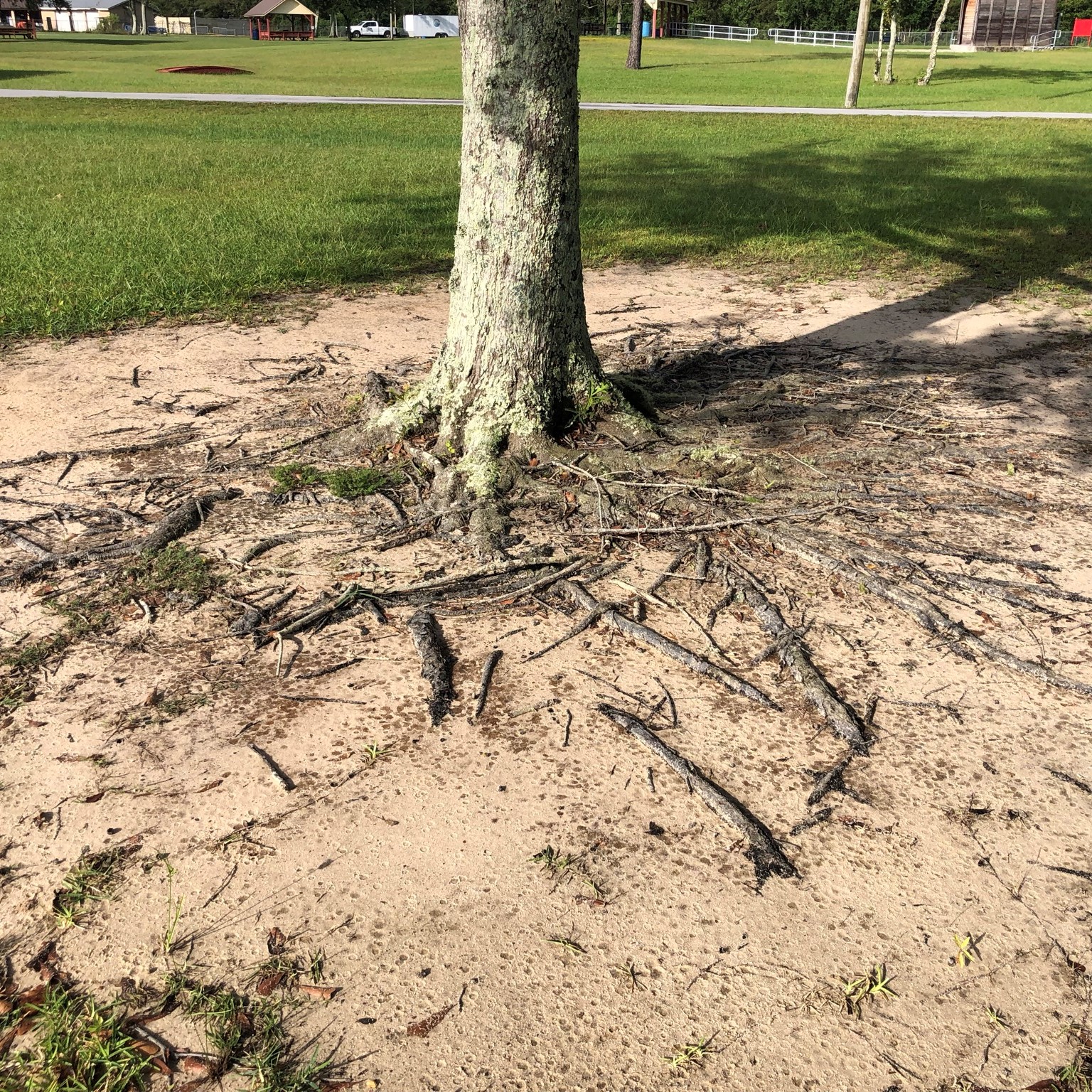Tree roots fit the meaning of the phrase out of sight, out of mind. But they are far from being unimportant. They are, in fact, key to a healthy tree if we understand their structure and how to protect them. Knowing their role in a tree’s existence is a great start so that we can ensure their health and that of the tree to which they belong. So here is Tree Roots 101.
Let’s start with misconceptions about tree roots. Although most trees start out forming a tap root – the single, downward-growing extension of the young trunk – it is one of four main types of roots and not the most important. Tap roots often degenerate as the tree’s main roots develop in the first few years. It is also not true that roots do not grow out far from the trunk. Roots can grow out far beyond the drip line of trees, in some cases, out as far from the trunk as the tree is tall.
Tap roots are the first to develop and help to anchor young trees in the soil. They can grow to match the diameter of the trunk, at least at first, but for many trees, decline over time. Exceptions are for some pines that in good soil may have tap roots that can persist. The loss of tap roots in oaks is easily observed when they are blown over in a storm. What is exposed is the system of lateral roots that grew outward from the trunk and just below the surface.
Lateral roots are those we often see around the trunk of a tree. They can be several inches in diameter, tapering off as they grow outward. As their name reflects, they grow horizontally, a few inches below the surface (6-12 inches) as far as the lateral extent of the branches (the drip line). In trees that have a vertical profile, like pines, these roots extend further than the drip line. They provide the main means of anchoring the tree to the ground and provide the connection with the last two types of roots.
Feeder roots are the non-woody, fine (1/16 inch), and delicate roots that grow upward from the laterals where they absorb water and nutrients from the near-surface part of the soil profile where leaf litter is being decomposed. These fine roots can intertwine to form mats that comprise the bulk of root structure in terms of overall length. They are also the most vulnerable to damage from our activities around trees – more below.
The last main type of root is known as sinker roots which grow downward from the laterals. They are smaller (less than an inch in diameter) and become non-woody as they grow outward. Their non-woody ends also absorb water and nutrients.
The lesson here is that our actions around trees can impact roots that are reflected in the health of the part of the tree we see. Cutting laterals for roadways and driveways cuts off sources of water and nutrients and weakens the stability of the tree. Trees along streets that have had their laterals cut are an example. Trampling and compacting the soil around trees (like parking cars under them) kills the fine feeder roots. Exposing the lateral roots around a tree and mowing over them has a similar impact.
To be responsible stewards of trees is to understand that the root system of even large trees should be protected by limiting our activities around them, at least as far as practical. We may not be able to extend that protection out to the drip line, but the more we can protect, the healthier the tree will be. The more we know, helps us be better stewards of our trees.
Hope to see you in our great outdoors!






